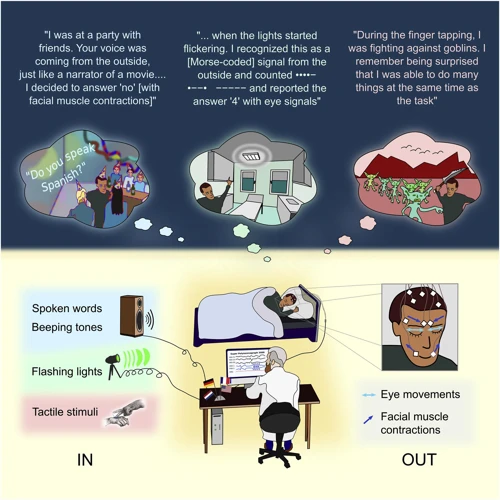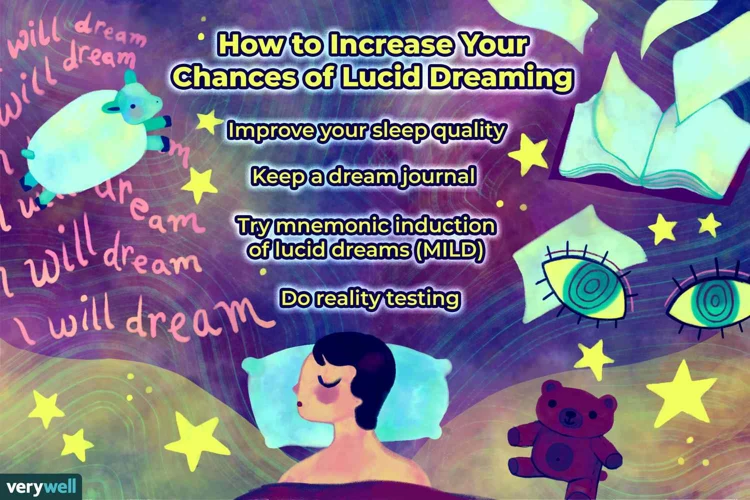Imagine being able to enter a realm where the boundaries of reality dissolve, and you have the power to shape your dreams and experiences. This extraordinary ability is known as lucid dreaming. Lucid dreaming allows you to become aware within your dreams and take control of the narrative, opening up a world of endless possibilities. But what if lucid dreaming could also be harnessed for a practical purpose, such as problem-solving? In this article, we will delve into the science behind lucid dreaming and explore how it can be used as a powerful tool for problem-solving. We will also discuss various techniques to achieve lucid dreaming and provide step-by-step guidance on utilizing your dreams to find innovative solutions. Prepare to unlock the hidden potential of your dreams and tap into the extraordinary power of lucid dreaming.
The Science Behind Lucid Dreaming

The Science Behind Lucid Dreaming lies in understanding the intricate workings of the human brain during sleep. Lucid dreaming occurs when the dreamer becomes aware that they are dreaming, enabling them to gain some control over the dream’s events and storyline. This phenomenon has captured the interest of researchers who seek to unravel the mysteries hidden within our dreams. Lucid dreaming is believed to primarily involve the prefrontal cortex, the part of the brain responsible for logical thinking and self-awareness. Studies have shown that during lucid dreaming, this area becomes highly active, indicating a heightened level of consciousness and cognitive control. Additionally, neuroscientists have discovered that lucid dreaming is associated with an increased presence of gamma brainwave activity, which is linked to high levels of focus and awareness. Exploration of the science behind lucid dreaming offers insights into the mechanisms by which the mind can navigate and manipulate the dream world. By understanding the underlying brain processes, researchers hope to unlock the full potential and applications of lucid dreaming, such as its connection to emotional healing or its relation to sleep paralysis. For more information on the science behind lucid dreaming, you can read our article on The Science of Lucid Dreams.
1. Understanding Lucid Dreaming
Understanding Lucid Dreaming is crucial to harnessing its power for problem-solving. Lucid dreaming is a state of consciousness where the dreamer becomes aware that they are dreaming while still in the dream itself. This level of awareness allows individuals to actively participate in and manipulate their dreams, leading to a rich and immersive experience. One common technique used to induce lucid dreams is reality checks, where individuals perform simple tests or observations during their waking hours to determine whether they are dreaming or awake. These reality checks serve as triggers to help the dreamer recognize the dream state and become lucid. Another key aspect to understand is how lucid dreaming can be a tool for emotional healing. Research suggests that engaging in lucid dreaming can provide individuals with opportunities to confront and resolve emotional issues within the safety of the dream world. This process allows for a deeper understanding of one’s emotions and can lead to personal growth and healing. To learn more about the connection between lucid dreaming and emotional healing, check out our article on Lucid Dreaming for Emotional Healing. It is important to note that while lucid dreaming can be a fascinating and empowering experience, some individuals may encounter sleep paralysis, a temporary inability to move or speak during the transition between waking and sleeping. Understanding the various aspects of lucid dreaming can help individuals navigate and make the most of this unique dream state.
2. The Brain and Dreams
Understanding the intricate relationship between the brain and dreams can provide valuable insights into the fascinating world of lucid dreaming. When we enter the realm of sleep, our brain undergoes a complex series of activities that give rise to dreams. During the dream state, the brain exhibits unique patterns of neural activity, with different regions communicating and interacting in ways distinct from waking consciousness. One prominent theory suggests that the activation of the limbic system, responsible for emotions and memories, plays a crucial role in dream formation. Studies have also shown that the brain’s sensory areas, such as the visual cortex, become active during dreaming, creating vivid and immersive experiences. The frontal lobes, involved in higher-order thinking and self-awareness, are less active during regular dreams but can exhibit increased activity during lucid dreaming. This fascinating interplay between different brain regions and their connections sheds light on the complex nature of dreaming and the potential for conscious awareness within dreams. To delve deeper into the fascinating relationship between the brain and dreams, specifically in the context of sleep paralysis, you can refer to our article on Lucid Dreams and Sleep Paralysis.
Lucid Dreaming and Problem-Solving

Lucid Dreaming and Problem-Solving go hand in hand, offering a unique and powerful approach to finding solutions to real-life challenges. When we enter a lucid dream state, we have the opportunity to tap into our subconscious mind, which can help us unravel complex problems and spark creative insights. Within a lucid dream, we have the ability to actively engage with the dream environment and manipulate it to our advantage. This level of control allows us to experiment with different scenarios, test potential solutions, and observe the outcomes firsthand. Lucid dreaming enables us to access our intuition and tap into our inner wisdom, free from the constraints of waking life. By setting clear intentions before entering a lucid dream, we can direct our focus towards specific problem-solving tasks, channeling our mental energy towards finding innovative solutions. The power of lucid dreaming lies in its ability to combine the imaginative capabilities of dreaming with the conscious intent to address real-world problems. With practice and intention, lucid dreaming can become a valuable tool for problem-solving, unlocking new perspectives and insights that may not have emerged in our waking state of mind.
1. Problem-Solving in Dreams
Problem-Solving in Dreams is a fascinating aspect of lucid dreaming that holds great potential for individuals seeking innovative solutions. When we dream, our subconscious mind has the freedom to explore ideas and scenarios without the limitations of waking life. One theory suggests that the problem-solving capabilities in dreams may arise from the brain’s ability to make novel connections and associations during sleep. During REM (rapid eye movement) sleep, which is the stage when most dreams occur, the brain enhances its creative thinking processes, allowing for out-of-the-box solutions to surface. Lucid dreaming takes this a step further by enabling individuals to actively engage in problem-solving within their dreams. Studies have shown that individuals who practice lucid dreaming have reported solving various problems, ranging from personal dilemmas to complex puzzles. By tapping into the vast potential of the subconscious mind, problem-solving in dreams can provide unique perspectives and insights that may not be readily apparent in waking life. Engaging in conscious problem-solving during lucid dreams is a way to harness the power of our subconscious mind and utilize its limitless creativity.
2. Setting Intentions in Lucid Dreams
Setting intentions in lucid dreams is a powerful technique that allows dreamers to direct their dream experiences towards specific goals or desired outcomes. When we set an intention before entering a lucid dream, we are essentially programming our subconscious mind to focus on a particular objective during the dream state. By doing so, we can tap into the potential of our dreams as a platform for problem-solving and personal growth. Here are a few steps to follow when setting intentions in lucid dreams:
1. Reflect on your goals: Before going to bed, take some time to reflect on the specific problem or area of your life that you want to explore or find solutions for in your lucid dream. It could be a creative project, a personal challenge, or even seeking guidance on a decision you need to make.
2. Formulate your intention: Once you have identified your objective, formulate a clear and concise statement that encapsulates your intention. For example, if you are seeking creative inspiration, your intention could be “I will find innovative ideas and solutions in my lucid dream tonight.”
3. Repeat and visualize: Repeat your intention several times, either silently or out loud, while visualizing yourself achieving your desired goal. Engage your senses and emotions to enhance the impact of your intention.
4. Enter the dream with intention: As you drift off to sleep, hold your intention firmly in your mind. Visualize yourself becoming lucid within your dream and actively engaging with your goal or problem. This priming of your subconscious mind increases the likelihood of having a lucid dream that aligns with your intention.
By setting intentions in lucid dreams, you are essentially programming your mind to guide your dream experiences towards problem-solving and self-exploration. It is a powerful practice that allows you to tap into the vast potential of your subconscious mind. Remember, consistency and practice are key to mastering this technique and unlocking the transformative power of lucid dreaming.
Techniques to Achieve Lucid Dreaming

Techniques to Achieve Lucid Dreaming involve various practices and strategies that can increase the likelihood of experiencing lucidity within your dreams. Here are three effective techniques to help you enter the world of lucid dreaming:
1. Reality Checks: Reality checks involve performing regular checks throughout the day to determine whether you are in a dream or reality. These checks can include looking at your hands, trying to push your finger through your palm, or questioning the consistency of your surroundings. By making reality checks a habit, you increase the chances of performing them within your dreams, which can trigger lucidity.
2. Keeping a Dream Journal: Keeping a dream journal involves recording your dreams immediately upon waking up. By writing down the details of your dreams, you train your brain to pay more attention to them, increasing dream recall and awareness. This practice also helps you identify common dream elements or patterns that can act as cues for lucidity.
3. MILD Technique: The MILD (Mnemonic Induction of Lucid Dreams) technique involves setting intentions and affirmations before falling asleep. As you lay in bed, repeat a phrase like “I will have a lucid dream” or visualize yourself becoming aware and in control within a dream. By priming your mind with these affirmations, you increase the likelihood of achieving lucidity during sleep.
By consistently applying these techniques and incorporating them into your daily routine, you can enhance your chances of experiencing lucid dreaming. Remember, practice and patience are key on the path to unlocking the incredible world of lucid dreaming.
1. Reality Checks
Reality checks are a fundamental technique for inducing lucid dreaming. The premise behind reality checks is to question the nature of your reality throughout the day, in the hopes that this habit carries over into your dreams. By regularly performing reality checks during waking hours, you reinforce the idea of questioning reality, which can then become ingrained in your subconscious mind. Reality checks involve questioning the consistency and plausibility of your surroundings and experiences. Some common reality checks include trying to push your finger through your palm, looking at the time on a clock, or attempting to read a line of text twice. The idea is to develop a habit of practicing these reality checks that can then carry over into your dreams. In the dream state, performing a reality check may lead to a realization that you are in fact dreaming. This sudden awareness can trigger a lucid dream, allowing you to take control and consciously navigate the dream world. Remember to perform reality checks regularly and with genuine curiosity. This practice can significantly increase your chances of having lucid dreams.
2. Keeping a Dream Journal
Keeping a Dream Journal is a crucial step in cultivating lucid dreaming abilities and harnessing the power of your dreams for problem-solving. By documenting your dreams in a journal, you create a tangible record of your dream experiences that can serve as a reference and aid in self-reflection. A dream journal can be a simple notebook or a dedicated digital platform where you can easily jot down key details immediately upon waking up. Writing in your dream journal helps to solidify dream memories and strengthens your overall dream recall. Each morning, as soon as you wake up, take a few moments to write down any dream fragments, emotions, symbols, or vivid images that you remember. Try to be as detailed as possible, capturing the essence of the dream and any relevant context. It is important to write freely without self-editing or judgment, allowing the stream of consciousness from the dream state to flow onto the pages of your journal. Over time, you will notice patterns, recurring themes, and symbols that can provide insight into your subconscious mind. Reviewing your dream journal regularly can help you identify dreamsigns, which are cues that appear consistently in your dreams. These dreamsigns can serve as triggers or reality checks to prompt lucidity within your dreams. By maintaining a dream journal, you create a strong foundation for lucid dreaming practice and enhance your ability to actively engage with your dreams. Stay tuned for the next section where we will explore different techniques that can be used to achieve lucid dreaming.
3. MILD Technique
The Mnemonic Induction of Lucid Dreams (MILD) technique is a popular and effective method used to induce lucid dreaming. This technique capitalizes on the power of intention and the use of mnemonic cues to promote awareness within dreams. To practice the MILD technique, follow these steps:
1. Set your intention: Before going to sleep, remind yourself repeatedly that you will have a lucid dream. Affirmations like “I will become aware that I am dreaming” will strengthen your intention and prime your mind for lucidity.
2. Create a mnemonic cue: Choose a specific action or event that often occurs in your dreams. For example, if you frequently dream about flying, your cue could be “When I am flying, I will know that I am dreaming.” Repeat this cue to yourself as you drift off to sleep.
3. Visualize: As you repeat your mnemonic cue, vividly imagine yourself becoming lucid in a dream scenario. Picture yourself recognizing the cue and realizing that you are dreaming. This visualization helps strengthen the association between the cue and lucidity.
4. Perform reality checks: Throughout the day, engage in reality checks to foster increased self-awareness. Examples of reality checks include looking at your hands, trying to push your finger through your palm, or questioning your reality. By making these reality checks a habit, you are more likely to perform them in your dreams, triggering lucidity.
5. Practice consistency: Consistency is key when using the MILD technique. Repeat the steps every night before sleep, maintaining a disciplined and focused approach. Over time, your subconscious mind will integrate the intention and cues, increasing your chances of experiencing lucidity.
Remember, mastering lucid dreaming techniques like MILD requires practice and patience. It may take time to achieve the desired results, but persistence will ultimately improve your ability to control and manipulate your dreams. Harness the power of the MILD technique and unlock the extraordinary world of lucid dreaming.
Using Lucid Dreams for Problem-Solving

Using Lucid Dreams for Problem-Solving is a powerful technique that allows individuals to tap into their subconscious mind and harness the creative abilities of the dream world. Here are three steps to effectively utilize lucid dreaming for problem-solving:
1. Identify the Problem: Before entering a lucid dream, it is essential to identify the specific problem you wish to address. This could be anything from a personal dilemma to a professional challenge. Clearly defining the problem in your waking state helps your subconscious mind focus on finding solutions during the dream.
2. Visualization and Mind Mapping: Once you have identified the problem, take some time to visualize different scenarios and potential solutions. During your lucid dream, you can explore these scenarios, allowing your creativity and intuition to guide you. Additionally, you can create a mind map in your dream, visualizing different connections and associations related to the problem at hand. This structured approach enables your brain to make new connections and generate innovative ideas.
3. Seeking Guidance from Dreams: In a lucid dream, you can also seek guidance from dream figures or symbols that may represent your subconscious mind or higher wisdom. Engage with these dream entities, asking for insights or solutions to your problem. Pay attention to the messages and symbols you encounter during the dream, as they may hold valuable information and guidance.
By intentionally using lucid dreams for problem-solving, you can tap into your mind’s vast potential, explore different possibilities, and unlock new perspectives. Remember to keep a dream journal by your bedside to record your lucid dreams and the insights they provide. With practice and patience, lucid dreaming can become a transformative tool for creative problem-solving.
1. Identify the Problem
To effectively utilize lucid dreaming for problem-solving, the first step is to identify the problem. This entails recognizing and defining the specific issue or challenge that you want to address during your lucid dream. Take some time to reflect on the problem before going to sleep, focusing on its various aspects and potential solutions. Clearly articulating the problem in your mind will help your subconscious mind prioritize it during your dream state. You can even write down the problem in a journal or repeat it as an affirmation before sleeping to reinforce your intention. By bringing the problem to the forefront of your awareness, you create a foundation for your lucid dream to serve as a productive problem-solving environment.
2. Visualization and Mind Mapping
Visualization and mind mapping are powerful techniques that can be utilized during lucid dreaming to enhance problem-solving abilities. When you become lucid in a dream, you can actively engage in visualization by picturing the problem or challenge you wish to solve. By mentally visualizing the issue, you can explore different perspectives, potential solutions, and even simulate the outcome of different approaches. Visualization taps into the creative and imaginative aspects of your mind, allowing you to generate innovative ideas and explore unconventional solutions.
Another effective technique is mind mapping, which involves visually organizing your thoughts and ideas. In a lucid dream, you can create a mind map by mentally connecting related concepts, ideas, and solutions. You can use colors, symbols, or spatial arrangements to represent different elements and their relationships. Mind mapping allows for non-linear thinking and encourages the exploration of various associations and connections.
During the lucid dream, immerse yourself fully in the process of visualization and mind mapping. Engage all your senses, not just visualizing images but also feeling, hearing, and even tasting aspects related to the problem. By utilizing these techniques, you allow your subconscious mind to work creatively and present you with novel insights and perspectives.
The combination of visualization and mind mapping during lucid dreaming can unleash the full potential of your mind’s problem-solving capabilities by utilizing the power of imagination and creativity that often lay dormant during waking hours. Don’t be afraid to experiment and explore different avenues in your lucid dreams, as it is within these realms that hidden solutions can be uncovered and revolutionary ideas can be born. Embrace the limitless possibilities of lucid dreaming and harness its power to solve complex problems with ease and inventiveness.
3. Seeking Guidance from Dreams
Seeking Guidance from Dreams is a fascinating aspect of lucid dreaming that can provide valuable insights and inspiration. When you have the ability to become aware within a dream, you can actively seek guidance from your subconscious mind. This process involves setting intentions before sleep and asking specific questions or seeking solutions to problems. Once you have achieved lucidity in your dream, you can engage in various techniques to access this guidance. One popular approach is to directly ask dream characters or symbols for guidance, either by posing questions or requesting clarity on a particular issue. Another method involves visualizing the desired outcome or solution and allowing your dream to present insights, symbols, or scenarios that may provide valuable guidance. It’s important to approach this process with an open mind and a willingness to explore different perspectives and interpretations. By actively seeking guidance from your dreams, you can tap into the wisdom of your subconscious mind, unlock new perspectives, and discover innovative solutions to real-life challenges. The power of seeking guidance from dreams can truly be transformative.
Benefits of Problem-Solving in Lucid Dreams
The benefits of problem-solving in lucid dreams are numerous and can greatly enhance your creativity and problem-solving abilities in the waking world. Let’s explore some of these benefits:
1. Fostering Creativity: Lucid dreams provide a limitless playground for your imagination to run wild. By actively engaging in problem-solving within the dream state, you can tap into your inherent creativity and come up with innovative solutions. The surreal and flexible nature of dreams allows you to think outside the box and explore unconventional ideas, leading to unique insights and breakthroughs.
2. Overcoming Mental Blocks: Lucid dreaming can help you overcome mental blocks and limitations that may hinder problem-solving in your waking life. When you realize that you are in control of your dreams, you can confront challenges head-on and experiment with different approaches without fear of failure or judgment. This freedom allows you to explore new strategies and perspectives, ultimately overcoming mental barriers that may have hindered your problem-solving abilities.
3. Enhancing Memory and Recall: Engaging in problem-solving within lucid dreams requires a sharp memory and the ability to recall details. By actively practicing problem-solving in your dreams, you can strengthen your memory and improve your ability to recall information, which can be beneficial in various aspects of your life.
4. Gaining Emotional Insight: Dreams often incorporate emotions and can serve as a reflection of our subconscious thoughts and feelings. Problem-solving in lucid dreams provides an opportunity to explore and process emotions related to the challenges we face. This emotional insight can lead to a deeper understanding of ourselves and the issues we are trying to solve, facilitating more effective problem-solving in the waking world.
5. Building Confidence: Successfully tackling problems within lucid dreams can boost your confidence and self-belief. As you navigate and conquer challenges in your dreams, you develop a sense of empowerment and the belief that you are capable of solving real-life problems. This newfound confidence can positively impact your problem-solving skills in your waking life, allowing you to approach challenges with a greater sense of self-assurance.
Problem-solving in lucid dreams offers a unique and valuable opportunity to harness the power of your subconscious mind, enhance your creativity, overcome mental blocks, and gain deeper insights into your emotions and thoughts. By utilizing the benefits of problem-solving in lucid dreams, you can unlock your full potential and find innovative solutions to the challenges you encounter in your waking life.
1. Fostering Creativity
When it comes to fostering creativity, lucid dreaming can be a potent tool. In a lucid dream, you have the ability to explore a world limited only by your imagination, unfettered by the constraints of reality. This unique state allows you to tap into the depths of your creativity and unleash innovative ideas that you may not have discovered in your waking life. Lucid dreams provide a safe space for experimentation, letting you test out unconventional solutions and explore new perspectives without any real-world consequences. You can engage with fantastical scenarios, envision vivid imagery, and even interact with dream characters who may impart their own unique insights. By actively engaging in problem-solving within lucid dreams, you can cultivate a rich well of creative thinking and unlock ideas that can be applied to real-world challenges. So, the next time you find yourself seeking a spark of creativity, venture into the realm of lucid dreaming to harness its extraordinary potential.
2. Overcoming Mental Blocks
Facing mental blocks can be extremely frustrating and hinder our progress in various areas of life, whether it’s creativity, problem-solving, or decision-making. One incredible benefit of using lucid dreaming as a problem-solving tool is its ability to help overcome these mental blocks. When we enter a lucid dream state, we have the opportunity to tap into our unconscious mind and access deep-seated thoughts, emotions, and memories that may be contributing to our mental blocks. This heightened state of consciousness allows us to explore alternative perspectives and think outside the box. By actively engaging with our dreams and challenging the limitations we impose on ourselves, we can uncover new insights and breakthrough solutions that seemed impossible in our waking life. Lucid dreams offer a safe and nonjudgmental space to experiment with different ideas, test hypotheses, and push the boundaries of our thinking. In these dreams, there are no real-world consequences or limitations, giving us the freedom to explore unconventional or risky approaches. The transformative power of lucid dreaming lies in its ability to dissolve the barriers of our conscious mind and provide a platform for unbridled exploration and innovation. So, the next time you encounter a mental block, consider delving into the realm of lucid dreaming and discover the limitless potential that lies within your own mind.
Conclusion
In conclusion, lucid dreaming offers a fascinating realm of exploration and potential for problem-solving. Through an understanding of the science behind lucid dreaming and the various techniques to achieve it, individuals can tap into the power of their dreams to gain insight and find innovative solutions. Lucid dreaming allows individuals to become active participants in their dreams, harnessing their creative abilities and breaking through mental blocks. The benefits of problem-solving in lucid dreams include fostering creativity and overcoming limitations. By identifying problems, visualizing and mind mapping solutions, and seeking guidance from dreams, individuals can tap into the subconscious mind and unlock hidden wisdom. Although still a topic of ongoing research, the power of lucid dreaming to harness the potential of the dreaming mind is undeniable. So, embrace the extraordinary power of lucid dreaming, and let your dreams guide you towards creative problem-solving and personal growth. Experience the magic of lucid dreaming and unlock the hidden potential within your own mind.
Frequently Asked Questions
1. Is lucid dreaming safe?
Yes, lucid dreaming is generally considered safe for most individuals. However, it is essential to maintain good sleep hygiene and prioritize overall well-being to ensure a healthy balance between wakefulness and sleep.
2. Can anyone learn to lucid dream?
Yes, with practice and persistence, most people can learn to have lucid dreams. It may take time and experimenting with various techniques, but the potential to experience lucidity during dreams is available to everyone.
3. How can lucid dreaming benefit problem-solving?
Lucid dreaming provides a unique opportunity to tap into the subconscious mind and explore creative solutions to problems. By harnessing the power of your dreams, you can gain fresh perspectives and uncover innovative ideas.
4. Can lucid dreaming improve sleep quality?
While lucid dreaming itself may not directly improve sleep quality, practicing techniques that promote lucid dreaming, such as maintaining a dream journal or practicing reality checks, can enhance overall sleep awareness and potentially lead to better sleep habits.
5. Are there any risks involved in lucid dreaming?
Lucid dreaming is generally considered safe, but it is essential to approach it responsibly. For some individuals, engaging in lucid dreaming practices may lead to increased dream recall, which can occasionally cause vivid or unsettling dreams. If any discomfort arises, it is advisable to ease off or seek guidance from a professional.
6. Can lucid dreaming affect memory and learning?
Studies suggest that engaging in lucid dreaming practices may have positive effects on memory and learning. Lucid dreams can provide an opportunity to practice skills or scenarios, potentially enhancing performance in real-life situations.
7. How long does it usually take to have a lucid dream?
The time it takes to have a lucid dream varies from person to person. Some individuals may experience a lucid dream spontaneously, while others may need to practice techniques consistently over a few weeks or months to achieve their first lucid dream.
8. Can lucid dreaming be controlled?
While achieving lucidity within a dream can be controlled to some extent, dreams themselves are unpredictable. The level of control one has in a lucid dream can range from having minimal influence to being able to manipulate the dream environment and events.
9. Can lucid dreaming be used for emotional healing?
Yes, lucid dreaming has been explored as a potential tool for emotional healing. By consciously engaging in lucid dreams, individuals may have the opportunity to confront and process unresolved emotional issues in a safe and controlled environment.
10. Are lucid dreams similar to astral projection?
Lucid dreaming and astral projection are distinct experiences. Lucid dreaming involves becoming aware within the dream state, whereas astral projection refers to an out-of-body experience where the consciousness is believed to leave the physical body and travel to different realms or dimensions.








